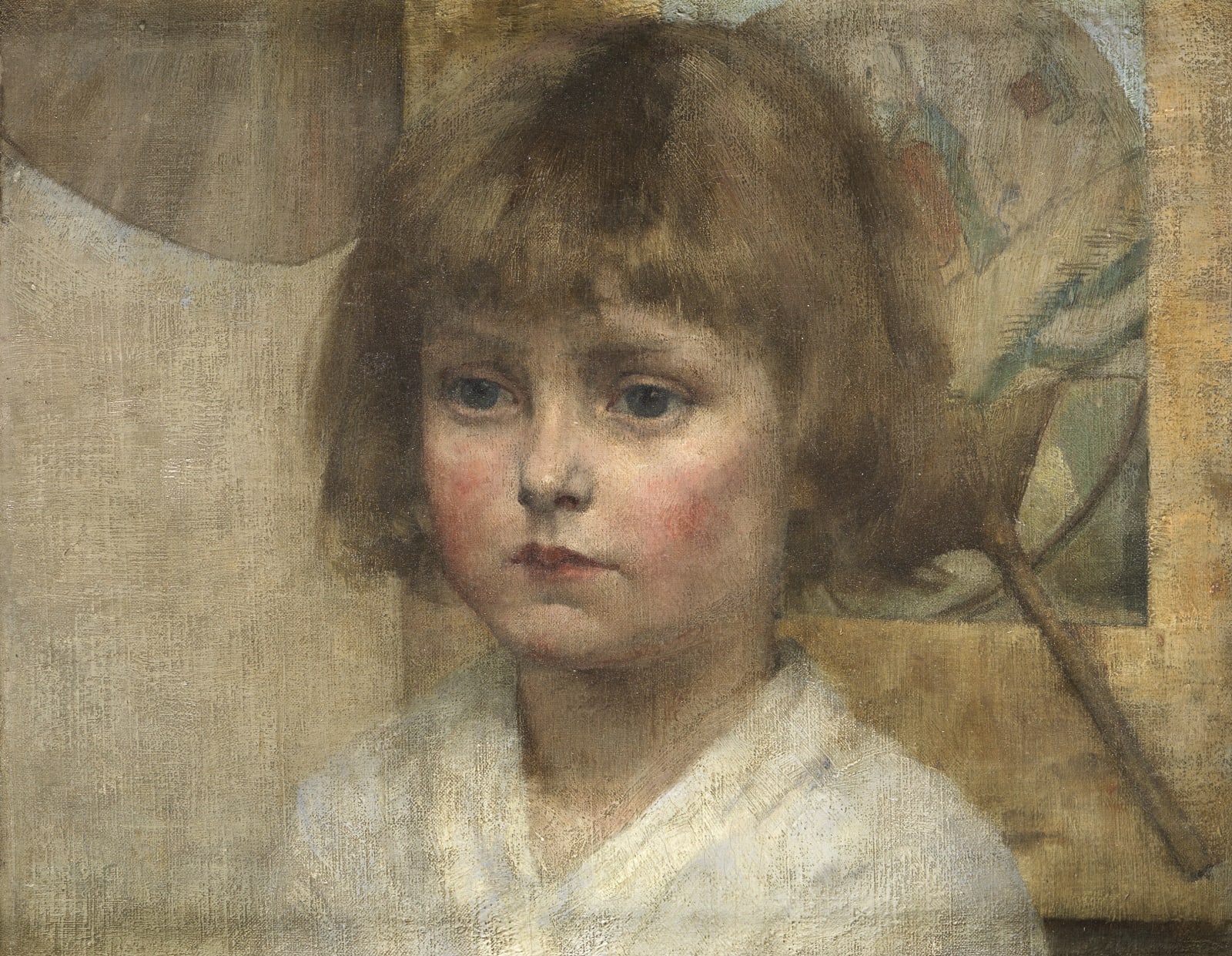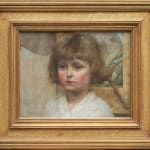Maurice William Greiffenhagen (1862-1931)
Provenance
R J Wardley
Exhibitions
Society of Painters in Oil Colours, 1884, no 359
At the Academy schools where he trained, Greiffenhagen won the Armitage Prize for an academic painting of Samson Bound by the Philistines, but was passed over three years later in 1885: 'The foreign style of Mr. Greiffenhagen's work could hardly be acceptable to the examiners, in spite of its grace and cleverness', commented the Pall Mall Gazette. It seems the artist had discovered new ideas in France, and had a change of style that did not sit well with his teachers. The influence is evident in Greiffenhagen’s work of this time, both from the square brush technique learned from Bastien Lepage, and in his subjects: pretty country girls in the woods, with elements of Japanese prints of the Ukiyo-e school (note the Japanese fan in the background). Specifically, his early work is close to those of the young painters that gathered from all over the world at the little riverside village of Grez-sur-Loing, near the forest of Fontainebleu south of Paris, to paint in beautiful, quiet, rustic simplicity. Greiffenhagen, who was working as an illustrator for Parisian magazines before 1880, may have been introduced to the community by Louis Welden Hawkins, another half-German artist – or, more likely, it might have been Greiffenhagen's friend, the painter William Mouat Loudan, who had an address in Paris in the 1880s.
At Grez, the Americans grouped around Sargent, and the Swedes around Larsson; the Danes of the Skagen school, some English - including William Stott of Oldham - and Irishmen all mingled with John Lavery and Frank O'Meara, who were all at Grez in the 1880s. They exhibited their paintings at the Salon in Paris, and also in Glasgow, where they had a formative influence on the Glasgow Boys. Greiffenhagen later taught painting in Glasgow for twenty years, and in London. It is with O'Meara's quiet, rural mood and muted grey-green tones that Greiffenhagen had the closest affinity.
Not long after, Greiffenhagen changed his style again, this time to paint romantic subjects with a heavier touch in rich Venetian colour. Amongst them was his famous picture called An Idyll of 1891 (Walker Art Gallery, Liverpool), which consumed D. H. Lawrence, inspiriting him to write his first novel, The White Peacock. Greiffenhagen also illustrated many books, notably his friend Rider Haggard’s She, and designed several famous railway posters.



